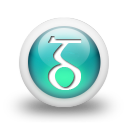Godelician: Difference between revisions
(→Vowels) |
|||
| Line 141: | Line 141: | ||
{| border="1" cellpadding="1" cellspacing="1" class="bluetable lightbluebg" style="width: 270px; text-align:center;" | {| border="1" cellpadding="1" cellspacing="1" class="bluetable lightbluebg" style="width: 270px; text-align:center;" | ||
! style="width: 90px; "| | ! style="width: 90px; "| | ||
! style="width: | ! style="width: 100px; " colspan=2 |Front | ||
! style="width: | ! style="width: 80px; " |Back | ||
|- | |- | ||
! style="" |Close | ! style="" |Close | ||
| i y | | colspan=2 |i y | ||
| u | | u | ||
|- | |- | ||
! style="" |Close-mid | ! style="" |Close-mid | ||
| e ø | | style="width: 50px; "|e | ||
| style="width: 50px; " rowspan=2|ø~œ | |||
| o | | o | ||
|- | |- | ||
| Line 157: | Line 158: | ||
|- | |- | ||
! style="" |Open | ! style="" |Open | ||
| a | | colspan=2 |a | ||
|} | |} | ||
===Phonotactics=== | ===Phonotactics=== | ||
<!-- Explain the consonant clusters and vowel clusters that are permissible for use in the language. For example, "st" is an allowed consonant cluster in English while onset "ng" isn't. --> | <!-- Explain the consonant clusters and vowel clusters that are permissible for use in the language. For example, "st" is an allowed consonant cluster in English while onset "ng" isn't. --> | ||
Revision as of 13:55, 8 February 2015
Godelician (Godelizge) is a Celtic language spoken in Godelicia on the Iberian peninsula. It is an artistic language set in an alternate history where Goidelic peoples settle the Northern part of the Iberian peninsula. It is descended from Old Irish, and forms part of the Goidelic family of languages, in the Ibero-Goidelic subfamily. This family contains many innovations from Vasconic, Romance and Semitic languages.
Background
Family
| Celtic |
| ||||||||||||||||||||||||||||||||||||||||||||||||
Internal history
External history
One of the differences about this timeline is that the advent of Old Irish has been pushed back to about 750 BCE, in order to avoid having to work off Primitive Irish or compromise the intended history of Godelicia. In other words, the Celtic languages split sooner in this timeline than in reality.
Dialectology
Aside from the various orthographies and scripts used for the standard language, the forms of Godelician found throughout the nation vary greatly. Some of the more notable varities include Gipuscan (Gıpuþce) in the West, which has a pitch accent, and the "harsh"-sounding Antaran dialect (Vhantarge) in the South, where [k] > [q], [g] > [ɢ], [x] > [χ], [ɣ] > [ʁ] and [t] > [ʔ].
Godelician's two closest relatives are Sardin and Pyrenaian. Pyrenaian developed from Old Godelician as spoken in the Pyrenees and OTL Catalonia, where it was preserved for a long time as a prestige language, due to its use by local nobility even after swearing fealty to the Holy Roman Empire. However, with the 18th-century invasion of the area by France, the language was suppressed. The last native speaker of Pyrenaian died in 1909, but there is an ongoing reconstruction effort.
Sardin is descended from Pyrenaian, as the Duke in the Pyrenees came to possess the county of Sardinia. It is the official language of the current Republic of Sardinia. Comparing Godelician and Sardin, the latter lacks many innovations from Vasconic (including ergative-absolutive alignment), and experienced greater influence from Italo-Romance and Greek.
Phonology
Consonants
| Bilabial | Labio-dental | Dental | Alveolar | Alveolo-palatal | Velar | Glottal | |
|---|---|---|---|---|---|---|---|
| Nasal | m | n | ŋ | ||||
| Plosive | p b | t d | k g | ||||
| Fricative | f v | θ ð | s z | ɕ ʑ | x ɣ | ||
| Approximant | w | h | |||||
| Trill | r̥ r | ||||||
| Lateral app. | l |
Vowels
| Front | Back | ||
|---|---|---|---|
| Close | i y | u | |
| Close-mid | e | ø~œ | o |
| Open-mid | ɛ œ | ɒ~ɔ | |
| Open | a | ||
